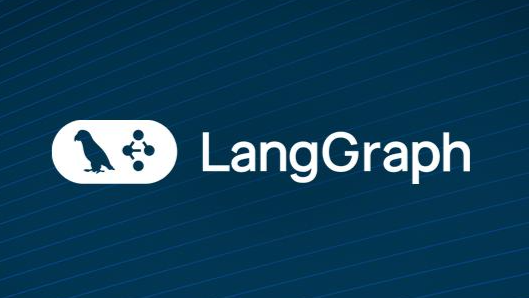LangGraph: Orchestrating LLM Agents via Explicit Control Graphs
Introduction
The evolution of LLM-based systems has led to increasingly complex agent workflows that require more than linear prompt execution. While frameworks such as LangChain, Haystack, or AutoGen provide abstractions for chaining model invocations or integrating tools, they often fall short when dealing with multi-branch logic, state persistence, or iterative reasoning.
LangGraph addresses these limitations by introducing a control flow paradigm based on directed state graphs. Built on top of LangChain, it allows developers to define workflows as graphs of stateful computation steps, enabling conditional routing, loop constructs, and fine-grained state management—capabilities essential for building reliable and testable multi-agent systems.
Objectives of LangGraph
LangGraph addresses the following challenges:
- Difficulties in handling loops, conditional branches, or backtracking in LLM agents.
- Limited debuggability, observability, and unit testing capabilities in current pipelines.
- Difficulty in composing multiple agents or tools within a persistent and controlled flow.
Architecture and Core Concepts
LangGraph builds on the following components:
1. Node
A Python function (sync or async) that receives a mutable dictionary as input state and returns a new state. A node can invoke an LLM, an external tool, an agent, or custom logic.
1
2
3
4
5
def retrieve_info(state):
query = state["question"]
response = my_llm_chain.run(query)
state["retrieved_answer"] = response
return state
2. Edge
A transition between two nodes. It can be unconditional or based on a conditional predicate.
3. StateGraph
The main graph structure. It defines nodes, transitions, entry and exit points.
4. Persistent State
The context is stored as a mutable dictionary. Memory can be injected or persisted via LangChain (e.g., Redis, Chroma, etc.).
Minimal Example
1
2
3
4
5
6
7
8
9
10
11
12
13
14
15
16
17
18
19
20
from langgraph.graph import StateGraph, END
def node_a(state):
print("Node A")
state["visited_a"] = True
return state
def node_b(state):
print("Node B")
return state
builder = StateGraph()
builder.add_node("A", node_a)
builder.add_node("B", node_b)
builder.set_entry_point("A")
builder.add_edge("A", "B")
builder.set_finish_point(END)
graph = builder.compile()
output = graph.invoke({})
Advanced Example: Multi-Agent Assistant
Use Case: Customer support agent with 3 sub-agents
- Retriever: fetches relevant documents
- Summarizer: condenses responses
- Escalation: determines whether human intervention is needed
1
2
3
4
5
6
7
8
9
10
11
12
13
14
15
16
17
18
19
20
21
22
23
24
25
26
27
28
29
30
31
32
33
34
35
36
37
38
39
40
from langgraph.graph import StateGraph
from langchain.chains import RetrievalQA, LLMChain
from langchain.chat_models import ChatOpenAI
from langchain.prompts import PromptTemplate
retriever_chain = RetrievalQA.from_chain_type(llm=ChatOpenAI(), retriever=vectorstore.as_retriever())
summarizer = LLMChain(llm=ChatOpenAI(), prompt=PromptTemplate.from_template("Condense: {input}"))
escalation_detector = LLMChain(llm=ChatOpenAI(), prompt=PromptTemplate.from_template("Do we escalate? {input}"))
# Wrappers
def retrieve(state):
state["context"] = retriever_chain.run(state["question"])
return state
def summarize(state):
state["summary"] = summarizer.run(state["context"])
return state
def escalate_check(state):
decision = escalation_detector.run(state["summary"])
state["escalate"] = "yes" in decision.lower()
return state
# Graph definition
builder = StateGraph()
builder.add_node("retrieve", retrieve)
builder.add_node("summarize", summarize)
builder.add_node("escalate_check", escalate_check)
builder.set_entry_point("retrieve")
builder.add_edge("retrieve", "summarize")
builder.add_edge("summarize", "escalate_check")
# Conditional transition
builder.add_conditional_edges("escalate_check", lambda state: "human" if state["escalate"] else END, {"human": END})
graph = builder.compile()
graph.invoke({"question": "Why isn't my printer connecting to WiFi?"})
Visualization and Debugging
LangGraph exposes graphs via networkx, enabling visualization of the execution flow.
1
2
import networkx as nx
nx.draw_networkx(graph.get_graph())
Integration with LangChain
LangGraph integrates seamlessly with LangChain components (LLMChain, AgentExecutor, Tool, Retriever, etc.), enabling reuse of existing building blocks.
- Compatible with
ChatOpenAI,RetrievalQA,MultiPromptChain - Persistent memory support (Redis, FAISS, Pinecone)
- Instrumentation via tracing tools (LangSmith, OpenTelemetry)
Comparison with Other Frameworks
| Feature | LangGraph | LangChain | Haystack | AutoGen |
|---|---|---|---|---|
| Flow control | ✅ | ❌ | ✅ | ✅ |
| Multi-agent support | ✅ | ❌ | ✅ | ✅ |
| Visualization | ✅ | ❌ | ✅ | ✅ |
| Conditional / Loop logic | ✅ | ❌ | ❌ | ❌ |
| Persistent state (memory) | ✅ | ✅ | ✅ | ✅ |
Limitations and Considerations
- Learning curve: requires thinking in terms of graphs and transitions.
- Less “plug-and-play” than classic LangChain.
- Still rapidly evolving (API subject to change).
Conclusion
LangGraph is a powerful framework for building complex LLM agent workflows. It offers precise execution control, better observability, and modular agent composition. It is especially suited for:
- Multi-agent assistants (support, copilots)
- Workflow automation with complex logic
- Hybrid search / RAG with conditional branching
For teams already using LangChain, adopting LangGraph can significantly enhance the robustness, clarity, and testability of LLM-powered pipelines.
